Mastering Cactus Propagation: 4 Techniques You Can’t Miss
Cacti are super trendy as houseplants because they’re easy to take care of and come in all sorts of cool styles. They can totally transform any indoor or outdoor space with their unique and eye-catching appearance.
But wait, want to know a secret? You can actually make new cacti all on your own! Yep, it’s called propagation, and we’re about to show you four awesome methods to do it. Trust us, it’s not as hard as it sounds!
So, if you’re ready to level up your cactus game and expand your plant family, keep reading because we’ve got you covered. Let’s dive into the fascinating world of cactus propagation!
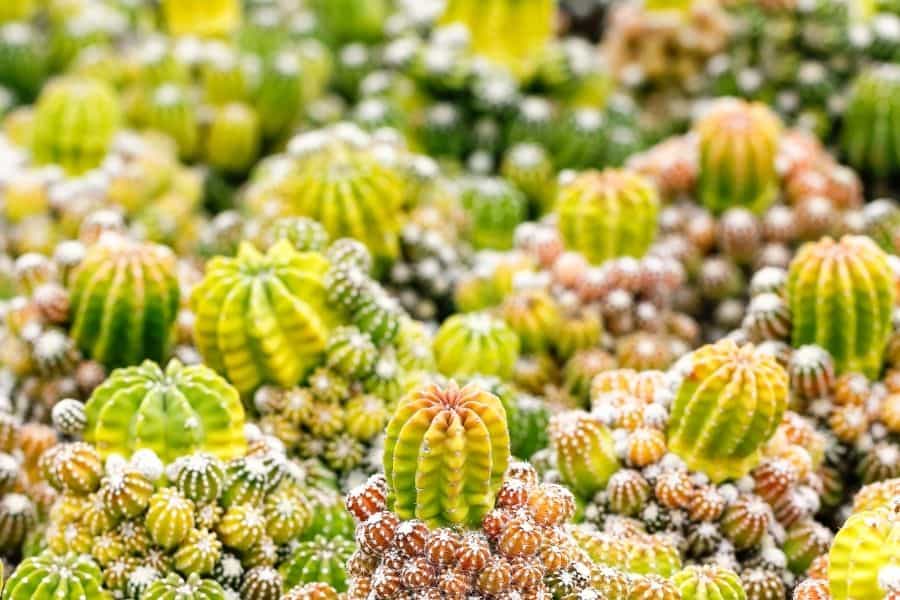
Contents
How to Propagate Cactus
Ready to level up your plant collection without breaking the bank? Well, we’ve got a cool trick for you: cactus propagation! Not only can you grow more cacti for yourself, but you can also gift them to your pals. Talk about a win-win!
First things first, timing is key. It’s best to propagate your cacti during their growth season, which is usually late spring or early summer. Avoid doing it during scorching heat waves or freezing winters. Trust us, your plants will thank you.
So, let’s dive into four awesome ways to propagate cacti: cuttings, seeds, offshoots, and grafting. Choose the method that tickles your fancy – or try ’em all if you’re feeling adventurous!
1. Propagation from Cuttings: Cut & Plant
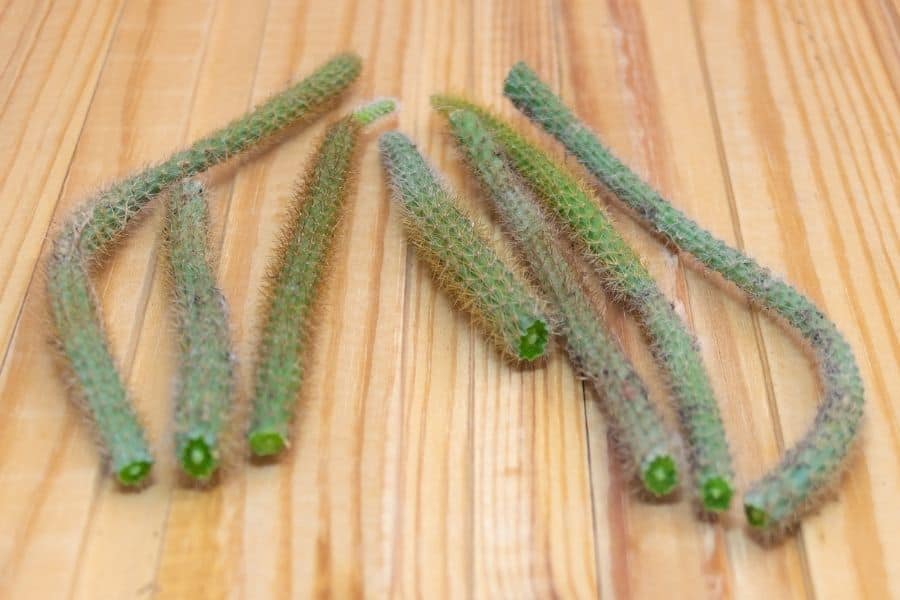
Grab a thick and healthy cactus stem, at least 4 inches long. Snip it using a clean pair of scissors (prickly cacti? No worries, use tongs for protection!). Let the cutting dry out for a couple of days until it forms a tough skin, known as a callus.
Now, find a pot with proper drainage and fill it with a cactus potting mix. Stick your callused cutting into the soil, making sure the callused part is buried beneath the surface. Water the plant generously and place it in a spot with indirect sunlight. Once the soil dries out completely, water it again. Be patient, though – it might take a few weeks or more for new growth to appear, but eventually, your cactus will establish its roots and grow!
Related Post:
How To Grow Cactus From Cuttings (Detailed Guide)
2. Propagation from Seeds: Sow & Grow
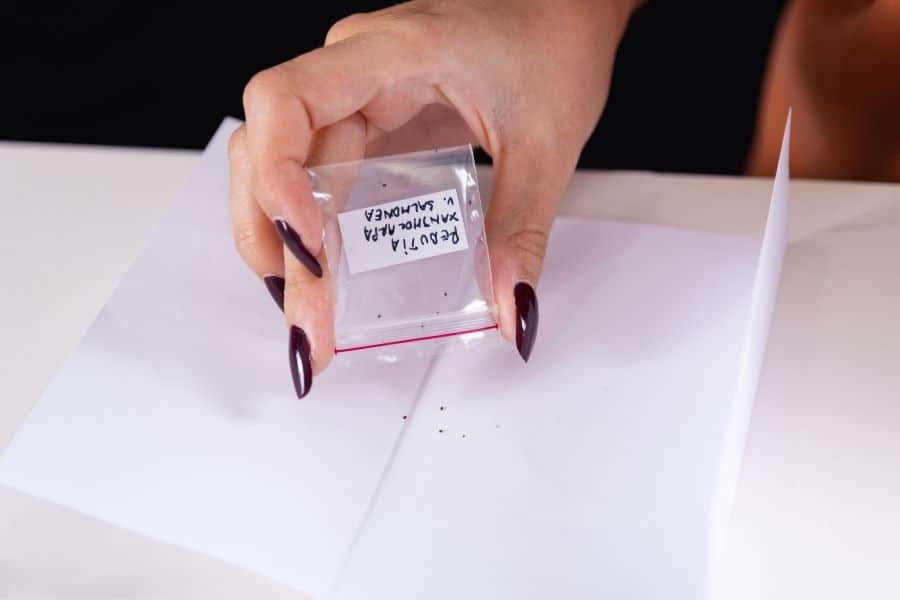
Note: Growing cacti from seeds requires time and patience, but hey, good things come to those who wait! This method is commonly used for cacti with solitary growth habits.
Grab a pot and fill it with a cactus soil mix that drains well, leaving some space at the top. Sprinkle your cactus seeds across the soil, about 2 inches apart. Gently cover them with more soil to ensure they’re well-nestled. Give the pot a good watering and find a cozy spot on your windowsill or shaded patio.
To create a mini greenhouse effect, you can cover the pot with a plastic sheet. Spritz the soil regularly to keep it moist, and wipe away any condensation that may appear on the sheet. Now it’s time to play the waiting game! Keep an eye out for sprouts popping up after 3-4 weeks. But beware, cacti are slow growers, so it might take up to a year before your seedlings are ready to be transplanted. When the time comes, gently use a fork to extract the tiny plants, keeping their delicate root system intact.
3. Propagation from Offshoots: Baby Cacti
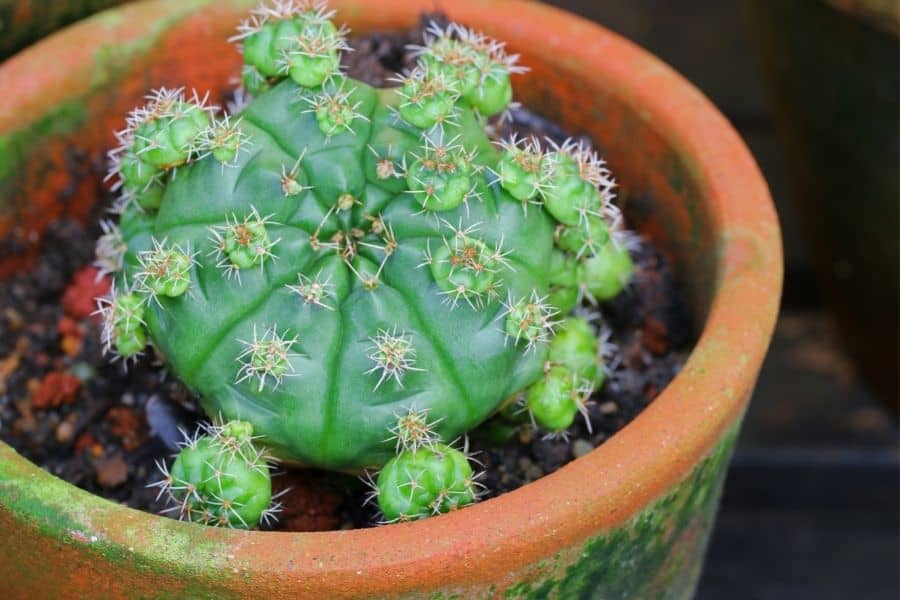
Did you know that some cacti can make adorable baby versions of themselves? And the best part? You can propagate them too! It’s a win-win situation because the parent cactus can focus its energy on growth while you get to expand your cactus family. Sweet, right?
Find a tiny offset, about 2 inches tall, branching off from the parent plant. Use a clean pair of gardening shears to separate it gently. Let the cut end dry out until the wound heals (usually a few days).
Grab a small pot and fill it up with a cactus soil mix. Carefully tuck the bottom quarter of the offset into the soil; no need to water it after planting. Place the pot in a spot with partial shade for now.
After 5-7 days, give your new baby cactus a little drink of water. Gradually, after a week, you can move it to a brighter location. Once the offshoot takes root (how cool is that!), provide the same care and love as you would for the parent cactus. Watch it grow and thrive!
4. Grafted Marvels: The Fusion Technique
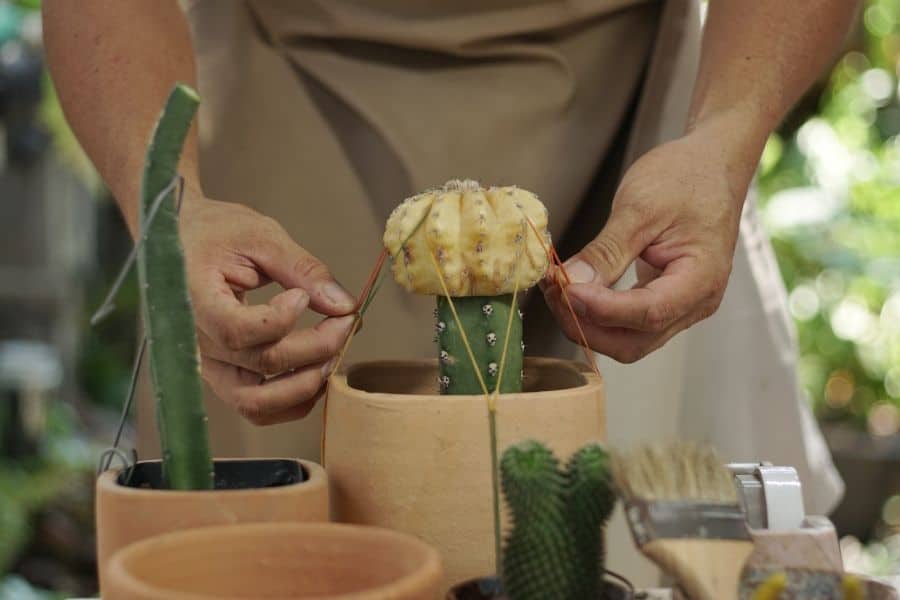
Get ready for some next-level cacti magic! Grafting is a fascinating method where you take a piece of one cactus and attach it to a different cactus, creating a unique combination. The piece that you detach is called the “scion,” and the rooted part is the “rootstock.” It’s like creating a cactus hybrid!
But hold up, not all cacti make good partners. It’s easier if they belong to the same species. Now, let’s dive into the simplest grafting technique:
- Begin by making a clean cut at the tip of the rootstock. You can choose the height, but make sure at least 2-3 inches of the plant remains.
- Next, mimic the same cut on a different cactus. That piece you just cut off will be the scion. The scion and rootstock will graft more easily if they have a similar diameter.
- Carefully place the scion onto the rootstock and secure them together using rubber bands. Wrap the rubber band all the way around the pot for a stable hold. Timing is crucial here! Make sure you don’t keep the scion and rootstock apart for too long, or they won’t graft successfully.
- After about two weeks, the scion and rootstock will bond together, like partners in crime. You can remove the rubber bands and care for your newly grafted cactus as you usually would.
And there you have it! Four awesome ways to propagate cacti and expand your desert oasis. So go ahead, get your hands dirty, and watch your cactus family grow!
FAQs
What is the fastest way to root a cactus?
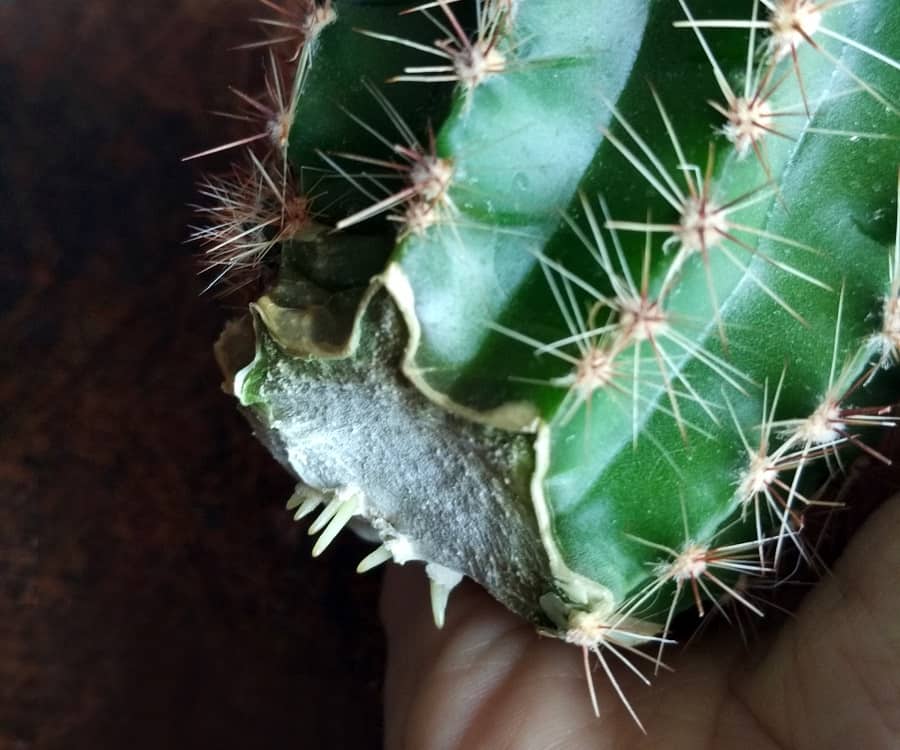
Normally, cactus cuttings and offshoots take about a month to root. Keep in mind that cacti grow slowly, so some species might take even longer.
While there’s no absolute “fastest” way to root a cactus, you can create optimal conditions to speed up the process. Planting a cactus offshoot or cutting during the summer or early autumn tends to yield quicker results. These months coincide with the cacti’s growing period, which boosts their ability to root faster.
So, if you’re eager to see your cactus take root in record time, try planting during these favorable months. Patience is key, but with the right timing, your cactus will find its footing sooner rather than later.
Can you water propagate cactus?

Yes, you can try propagating cactus in water. However, it’s not very common because cacti generally prefer soil for propagation. If you want to give it a shot, let the cuttings or offshoots dry and form calluses. Then, submerge at least ¼th of them in water. Keep in mind that not all cactus species can be successfully propagated in water, and even for those that can, success may vary depending on their specific needs and environmental conditions.
How do you root a broken piece of cactus?
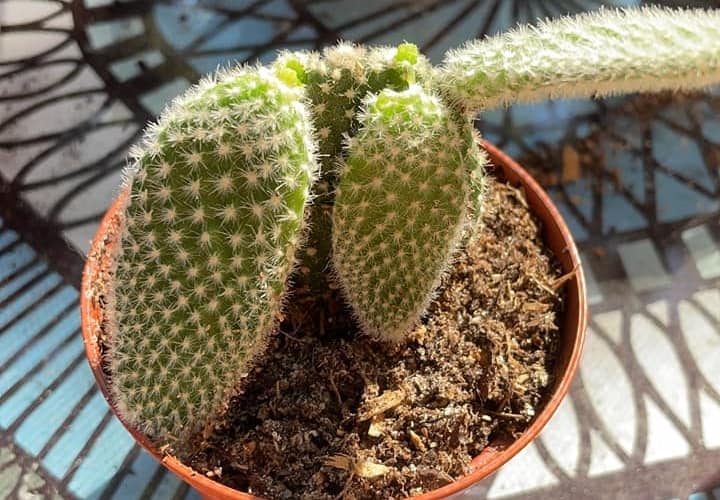
To root a broken piece of cactus, treat it like you would a cutting. Make sure the broken piece is at least 4 inches long to ensure successful root development. Allow the broken end to dry out, forming a tough skin called a callus.
Take a pot filled with cactus potting mix and insert the broken piece into the soil, making sure the wound is covered. Water the plant whenever the soil becomes dry, but be cautious not to overwater since cacti don’t need much water to thrive. Within about a month, the broken piece should take root and begin to grow.
How often do you water cactus cuttings?
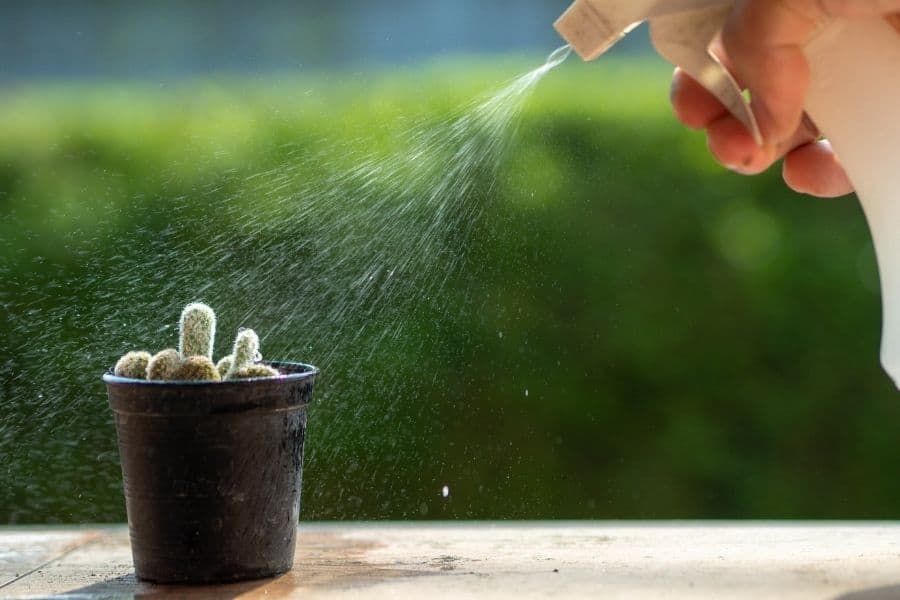
The watering frequency for cactus cuttings depends on a few factors. You should initially plant the cutting in damp soil, or if you live in a humid area, you can use dry soil. Whenever the soil completely dries out, lightly spritz the pot with water to keep the soil damp but not soaked. Once the cutting has established roots, continue watering when the soil becomes dry. This method helps prevent root and stem rot caused by overwatering.
How long does it take to root cactus cuttings?
The time it takes for cactus cuttings to root varies depending on the weather and the cactus species. Generally, you can expect them to root within about a month after planting. If your cutting hasn’t developed roots within a month, don’t worry—it usually takes another two weeks or so for rooting to occur. Patience is key when propagating cacti!
